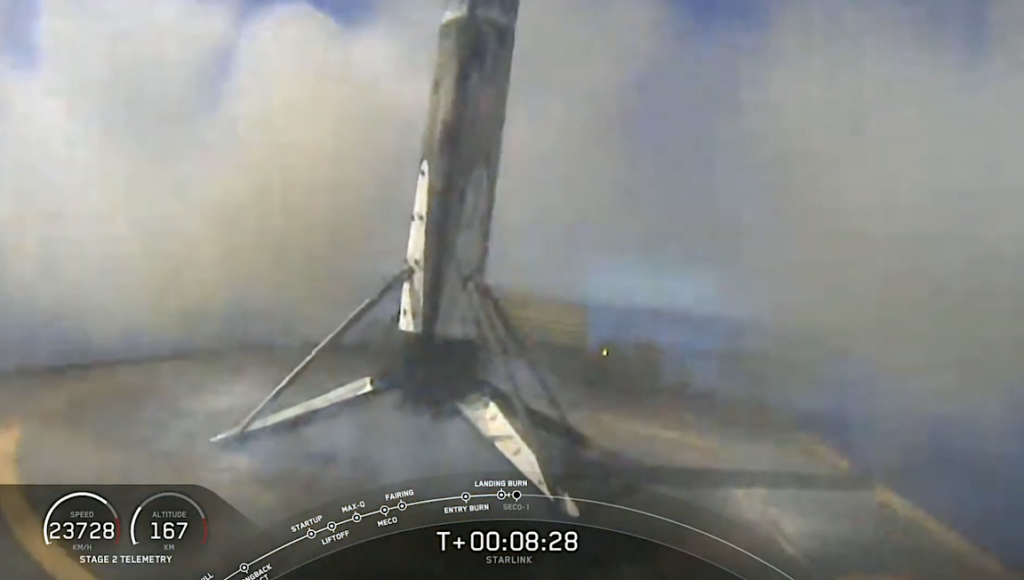

A launch delay on Thursday due to a small technical issue was corrected enabling today’s successful launch on Saturday, October 24, at 11:31 a.m. EDT, 11:31 UTC launch of SpaceX’s 60 Starlink satellites. The launch to orbit took place from Space Launch Complex 40 (SLC-40) at Cape Canaveral Air Force Station in Florida. The rocket launched at 11:31 a.m. during the instantaneous window, in which SpaceX did not have a longer timeframe to wait out possible weather violations. This mission also marked the 100th successful flight of a Falcon rocket since Falcon 1 first flew to orbit in 2008.

Falcon 9’s first stage previously supported the GPS III Space Vehicle 03 mission in June 2020 and a Starlink mission in September 2020. Following stage separation, SpaceX landed Falcon 9’s first stage on the “Just Read the Instructions” droneship, which was stationed in the Atlantic Ocean. The Starlink satellites deployed approximately 1 hour and 3 minutes after liftoff.
On Thursday, SpaceX CEO Elon Musk said in a tweet that the team reported “a small-seeming issue with loss of upper stage camera,” referring to the rocket’s second stage. “Probably nothing serious, but standing down to re-examine (the) whole vehicle just in case.”
Leading up to Saturday’s launch, SpaceX lead manufacturing engineer Jessica Anderson said the issue was resolved and the rocket was healthy.
SpaceX landed the booster about eight minutes after launch on the droneship called Just Read the Instruction already waiting in the Atlantic Ocean, marking the third flight for this rocket first-stage. SpaceX wasn’t attempting to catch the fairings for this launch but will retrieve them after they land in the water.
